'Wild rituals, human scarecrows & electromagnetic transmissions'

JUNE 3 - 18, 2017In the days preceding Midsummer in the year of 2017, a group of persistent gardeners, beekeepers, bakers and astronomers performed several wild rituals to breath life into the Bakehouse and Losæter. A series of actions germinated inside its belly, while smoke signals were sent through the chimney carrying messages to farmers near and far.
Program / Photos
Monday, June 5 (1-3pm)
Winds (New Flag)
by Jørund Aase Falkenberg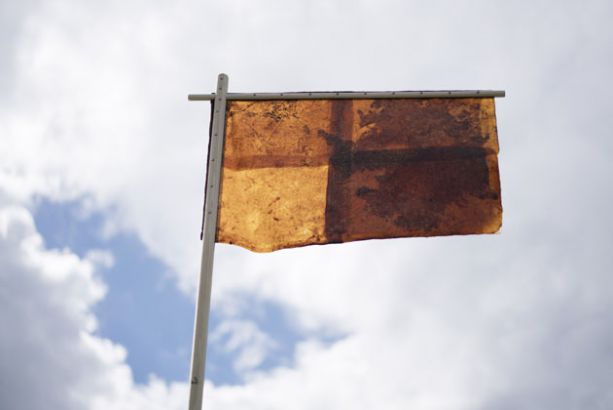






A moving, waving construction on top of the Bakehouse – turning by the winds, a flag. The work is part of an ongoing exploration of microbial cellulose as material, grown by the use of bacterial culture. The flag-construction embodied a vision of a fixed point in the midst of changing external forces. Microbial cellulose as fabric can be seen as a radical element – not made by human hands or machines. “Woven” by microorganisms it represents a non-anthropocentric twist to the human idea of marking one's territory and its internal values.
Friday, June 9 (workshop 9am-1pm / lecture 4:30-5:30pm)
School Dinners
by Tenthaus and Kunstkantina with Hersleb School of Adult Education



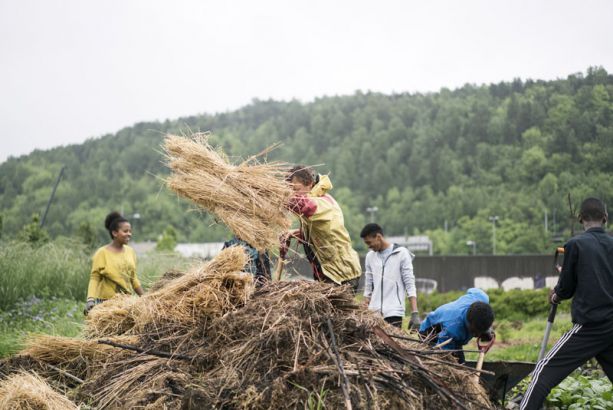





School Dinners aims to create an equation between the transformations of seeds and the individual potential released during educational processes. By creating a meal with own grown ingredients, Kunstkantina and the participants brought the Tenthaus philosophy of "learning by doing" into transformative action.
On June 9th, Kunstkantina presented their culinary project, and plans for the meal and pickling and open to discussion about our relationship to food generally.
Friday, June 9 - Saturday, June 16 (every day at 5pm)
Human Scarecrows 2.0
by Hanan Benammar / Vandaler Forening



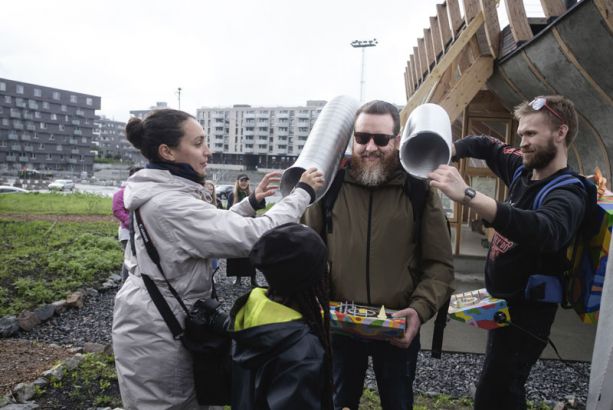
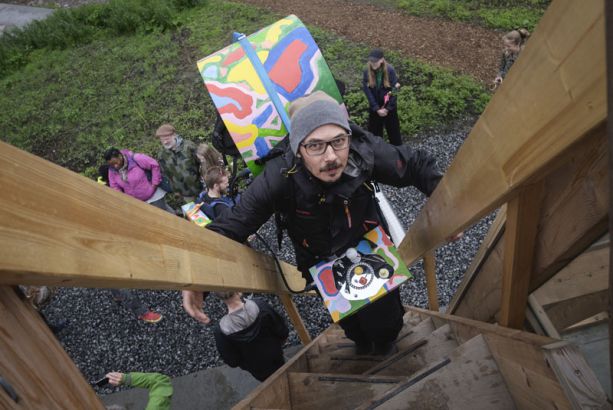






Human Scarecrows’ series of visual art performances suggested rituals allowing a dialogue with the birds to prevent them from eating the seeds or destroying the field. Rather than chasing them away, we aimed to engage in a dialogue and distract them by any means: they were the true spectators. All the performances and actions used alternative technologies as a source of power and were activated in between sunsets and sunrises.
Scarecrows on site were: Ethan Rafal • Det Elektriske Korps • Oslo Apiary & Aviary • ronnie s • WeAreWorms • Daniela Müller, Maria Belic & Per Westerlund • Aksel Høgenhaug • Kimvi Nguyen • Dimitri Lurie and Vera Mokhova
Sunday, June 11 (12-6pm)
How do you say flatbread?
by Food Studio Collective with Nina Sahraoui




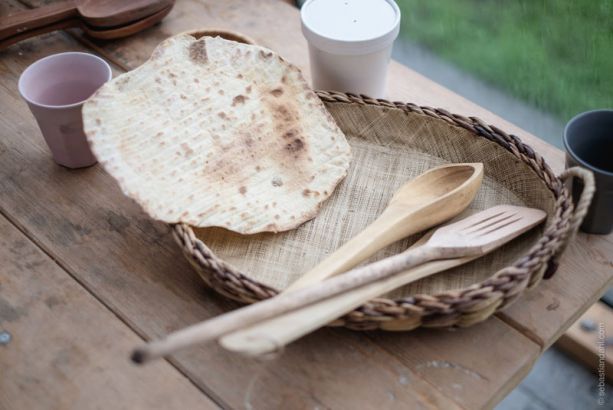

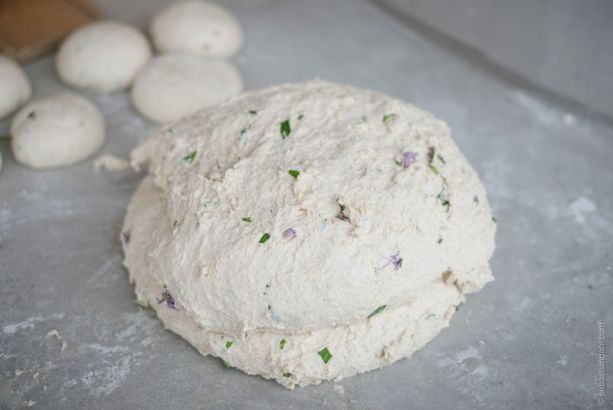
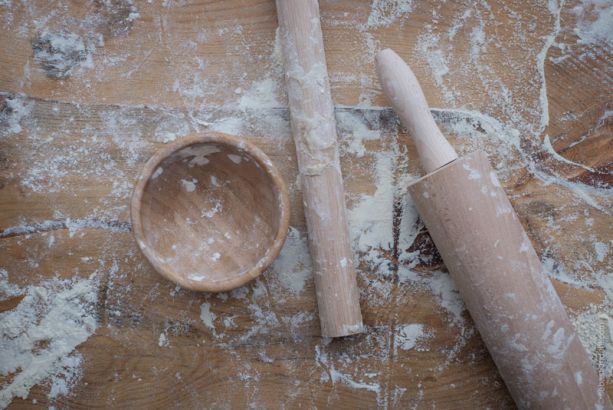
Lefse, naan, tortilla, cracker, injera, pita, arepa, lavash. An awakening of the Bakehouse wood oven, tandoor and takke and a go at rolling out many sorts of flatbreads.
Monday, June 12 (sunrise till sunset)
Sun Deck / Moon Deck
by Oslo Apiary & AviaryA refocus on Losæter as a contra-productive slow space, over the course of 24 hours, from sunrise 'til sunrise.
Upon the roof of the Bakehouse, there was daytime nude sunbathing and an exhibition of towels, and nighttime, sleeping with an exhibition of blankets.
Tuesday, June 13
Leverage on Leafage
by Oslo Apiary & AviaryAn interpretation of Flatbread Society's Declaration of Land Use. Textiles served as sculptures and performance props for a week, before transitioning to a life as functional hand towels and washing cloths in the Bakehouse.
Saturday, June 17 (all day)
Urban Pastures
by Herbanists + GrowLab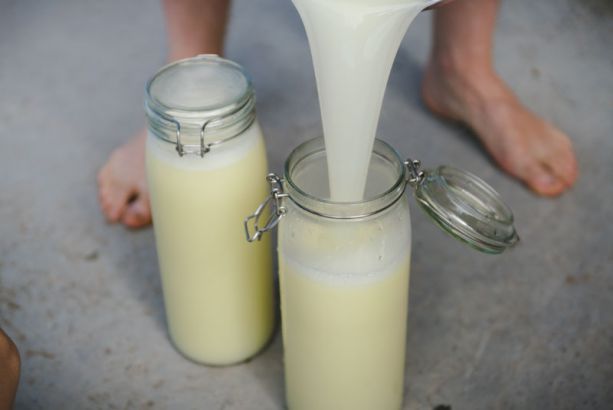






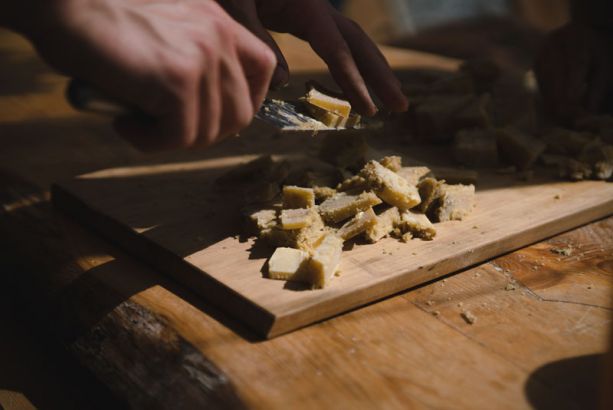
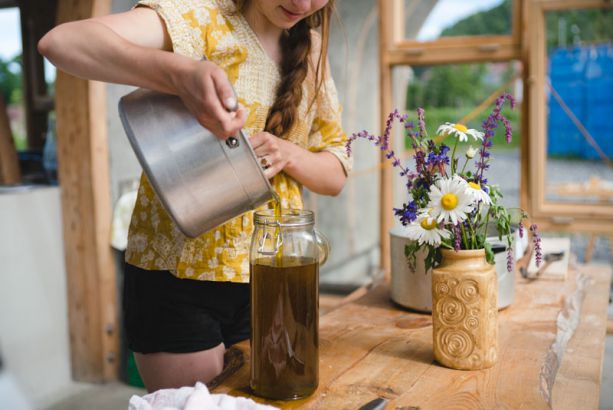
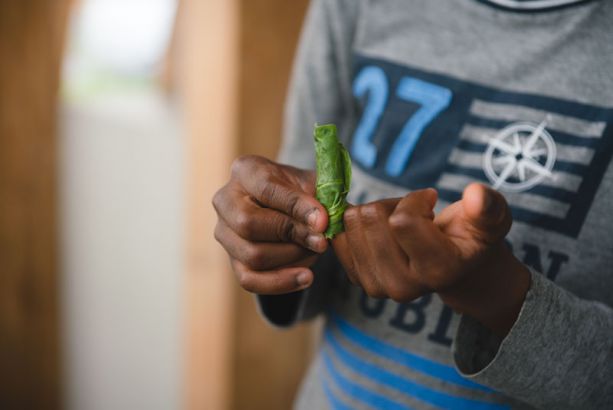



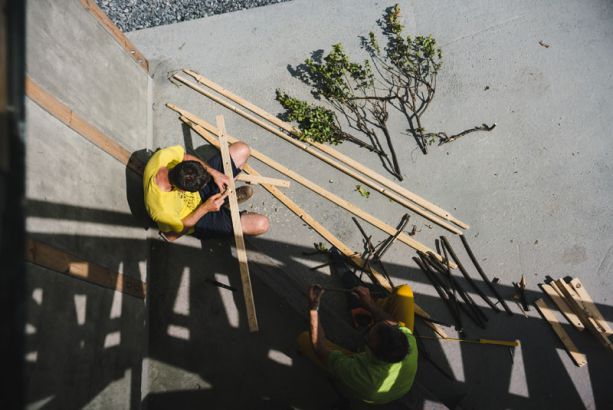








This day was a day of demonstrating and imagining the everyday life of Losæter. A group of individuals produced food and tools and performed everyday rituals, both planned and spontaneous. Cheese-making with goats milk, experimental flatbread baking, herb harvesting and drying, creams and ointments making and whittling. People joined in the activities, or brought their own "sæter" activities, tools and stories.
Saturday, June 17 (2-4pm)
Garden Radio - “Ragghio”
by Etienne Gernez and Mads Pålsrud

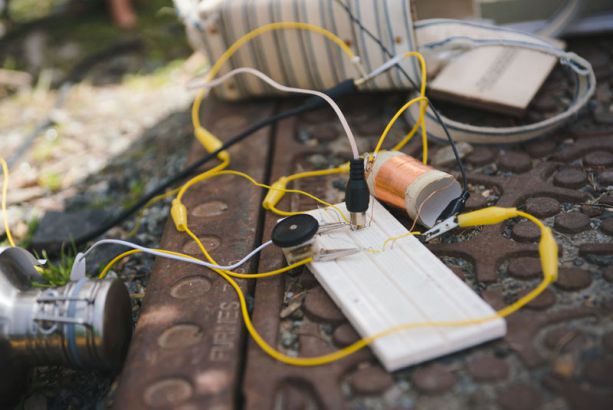




A very slow radio show that offered listeners the opportunity to listen to the soundscapes at Losaeter; between city and nature, land and sea, cars and boats, plants and bread.
Sunday, June 18 (12pm)
Losæter Blad
by Bieffekten and GrowLabA hyper-local newspaper covered the smaller news of Losæter: the lack of potassium in the southeast corner, the first seedlings, the attack by cabbage worms, straw broken, new pollen source found by the bees...
Story
There once was a farm that sailed away. This farm was a fertile piece of land that fed all of the king’s men and woman and the workers of the port of Oslo. She sailed the world searching for sturdy grains that had found their way into hiding places as the revolution of industrial agriculture rose. The farm rescued hundreds of seeds and accompanying knowledge and after nearly one hundred years of sailing she found her way back to a gray and idle landscape between the Medieval park and the Oslo fjord, which for many years had seemed a lifeless place in wait for better conditions. After so many years at sea, she had lost all her soil and was now merely a rocky island in the middle of a rough building site surrounded by roads, railway lines and two ventilation towers.
When the locals heard that the farm was back, she experienced a small revolution. Within a few hectic weeks during Spring, a group of young city dwellers and farmers transformed her into an oasis. Now liberated, this land became host to fertile soil, consumable plants, an ancient grain field, the first “city farmer” in Norway and a meeting house looking much like a ship.
... to be continued.




